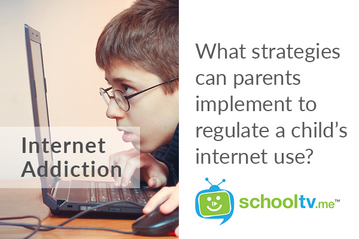Filter Content
Dear Parents and Carers
We hope that you all had a lovely Easter and the students enjoyed the school holidays.
Next week we will hold an ANZAC Day Liturgy on Wednesday 24 April at 8.50am in the morning. Parents are invited to join us as we remember those who fought for us. For those who wish to purchase ANZAC badges we do have a small supply available from the office.
We remind everyone that there is NO SCHOOL on Thursday 25 April for ANZAC Day and also on Friday 26 April as it is a school closure day. Camp Australia is operating on the Friday for those who need care, please book in now.
Uniform Update
For weeks 1 and 2 of Term 2 students can wear either complete summer OR complete winter uniform (but not a combination of both). From week 3, Monday 29 April, we ask all students to be in complete WINTER uniform.
The Secondhand Uniform store which is run by our volunteer parents grou pwill be open at the following times:
Friday 19 April 2:30-3:10pm
Monday 22 April 8:30-9:15am
Tuesday 23 April 2:30-3:10pm
- Year 5 LH & Year 5 MS depart for Camp
- Year 5 TT & Year 5 SM Camp Rest Day NO SCHOOL
Tuesday 23 April
- Year 5 LH & Year 5 MS return from Camp
- Year 5 TT & Year 5 SM depart for Camp
Wednesday 24 April
- Year 5 LH & Year 5 MS Camp Rest Day NO SCHOOL
- Year 5 TT & Year 5 MS return from Camp
- Anzac Day Liturgy 8.50am - parents welcome to join us
Thursday 25 April
- ANZAC Day NO SCHOOL
Friday 26 April
- NO SCHOOL - closure day
On Thursday March 28 our students excelled at giving generously to Caritas. Each Learning Group attended prayer spaces and also placed coins on our sentence, “Jesus calls us to be Kind.” A big thank you to our RE Leaders - Skylah, Leah and Maggie who coordinated the coin line. We are still in the Liturgical season of Easter - our prayer cloth colour has changed to white and we hear from John’s Gospel for the next few weeks until Pentecost Sunday on the 19 May.


Harmony Day and National Sorry Day (and Week) - CAN YOU HELP?
This year we are combining Harmony Day and National Sorry Day into one event which will occur on Monday 27 May.
Families are welcome to join us for a Prayer Service and other activities throughout the day.
We are calling out to all families who may be able to share a cultural dance, a cultural practice or speak about their religion with students. This day is about us understanding each other better so we need your help with this.
Students are invited to dress in traditional clothing or orange clothing (the colour of Harmony Day).
Please contact your child’s teacher if you are able to help out or Gab Verstraete gverstraete@stclaresofficer.catholic.edu.au
REPORTING AN ABSENCE
To report your child's absence please do so via PAM, email absent@stclaresofficer.catholic.edu.au or call 5940 6777
SCHOOL FEES
Here is the link for the St Clare's Parent Access Module (PAM)
St Clare's PAM
You username is the email address that you have registered with the school. The first time you log in we ask that you use the forgotten password feature to set your own password.
ALL parents must access PAM to receive up to date information and grant necessary permissions. Students will miss out on events if permission is not granted.
In this edition of SchoolTV - INTERNET ADDICTION
In today’s digital environment, the internet can be viewed as a valuable tool for education, research and entertainment. Young people today tend to go from one screen to another, but how much is too much? Time spent in the ‘screen world’ has parents concerned that their kids may be missing out on real life experiences. Therefore, it is vitally important to a child’s wellbeing for parents to regulate a child’s internet use.
Internet addiction can cause significant psychological and social problems for children in years to come. The true effects on future generations is not yet known, but there are strategies that parents can implement now.
In this edition, Dr Michael Carr-Gregg discusses what causes internet addiction, who is most at risk and what parents can do to regulate the amount of time their kids spend online each day.
We hope you take time to reflect on the information offered in this edition of SchoolTV and we always welcome your feedback. If you have any concerns about your child, please seek medical or professional help.
Here is the link to the Internet Addiction edition of SchoolTV
https://stclaresofficer.catholic.schooltv.me/newsletter/internet-addiction
How to Help Kids Stay Safe Online
Adapted from: https://www.esafety.gov.au/about-us/blog Office of the eSafety Commissioner
- Start the chat
It’s not possible to be at your child’s side every second of the day, so it’s important to talk with them about online safety issues to help develop their critical thinking and ability to make good choices. It’s also good to let them know they can come to you for help if they have any concerns. You may feel they know more about the latest technology than you do, but you have more life experience to guide them.
- With primary school aged children use online devices in the open living spaces at home to make parent supervision part of the expectation for your child.
- Take the opportunity to set some boundaries around when and where they can use devices like tablets, smart TVs and gaming consoles, to help limit potential tech tantrums — you could even fill in an Early Years Family Tech Agreement
- Screen free time before bed is important for good sleep. Consider charging devices in a central location at a regular time each night to allow an hour screen free before bed.
- While you are all at home more, it’s a great time to co-view and co-play with your kids, so you can understand what they are doing and experiencing online.
- Learn about the games, apps, social media and platforms they are using at The eSafety Guide, including how to protect their information and report inappropriate content or conduct.
- Use parental controls and safe search options
Parental controls can help block your child from accessing specific websites, apps or functions. They can also monitor your child’s use of connected devices and set time limits. But beware! You cannot always rely on them — they should be used in combination with other online safety strategies.
- Parental controls are available on most tablets, smartphones, computers, TVs and gaming consoles.
- You can also download family safety controls or buy robust filters out of the box.
- You can set up child-friendly search engines, or select safe search settings on digital devices, to help prevent your child from stumbling across inappropriate sites and content.
- Check smart toy settings
It’s surprising how many toys or devices can connect online these days, from drones and smart teddies to tablets and wearables. While they can be both entertaining and educational, they can reveal your child’s personal details and location — and allow other people to contact them without you knowing. You can help keep them stay safe by:
- setting strong passwords
- turning off location settings
- limiting the amount of personal information shared.
The eSafety Gift Guide has advice on what to check for and how to stay safe.
- Look out for unwanted contact and grooming
Unwanted contact is any communication that makes your child feel uncomfortable or unsafe, even if they initially welcomed the contact. It can come from a stranger, an online ‘friend’ or even someone they actually know. At worst, it can involve ‘grooming’ — building a relationship with the child in order to sexually abuse them.
You can help by:
- making sure their accounts are private — including chat functions on games
- encouraging them to delete requests from strangers and any contacts they don’t know in person
- checking in with your child as they use online devices in the open living spaces at home
- reporting and blocking anyone suspicious on a website or service
- remembering that if suspicious online contacts become aggressive or threatening you should contact your local police.
- Know the signs of cyberbullying
Kids who are bored by long periods at home can pick at each other, and that happens online too. So it’s important to keep an eye out for cyberbullying. It can include mean posts, comments and messages, as well as being left out of online group activities like gaming.
- Remember, when they are away from school, kids have less access to their usual support systems, including friends, teachers and counsellors.
- eSafety research shows that girls are more likely to be affected than boys and the person doing the bullying is generally someone they know from school.
- Watch out for signs such as your child appearing upset after using their mobile, tablet or computer, being unusually secretive about their online activities or becoming withdrawn.
- Cyberbullying can make social isolation worse and the longer it continues, the more stressed kids can become, impacting on their emotional and physical wellbeing.
What to do if your child is being cyberbullied
As parents, our first instinct may be to ban our children from social media, disable the wi-fi or turn off the data access. But this can actually compound the problem, making your child feel as if they’re being punished and heightening their sense of social exclusion.
There are four simple steps that can help minimise the harm:
- report the cyberbullying to the social media service where it is occurring
- collect evidence of the cyberbullying material
- if the material is still public 48 hours later, make a report to eSafety — we work with social media platforms to have the harmful content removed.
block the offending user.









